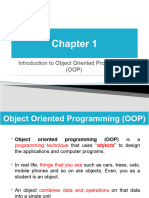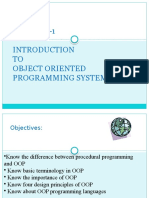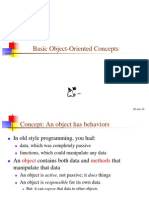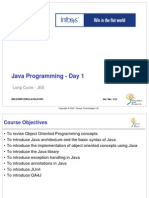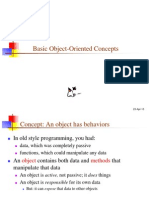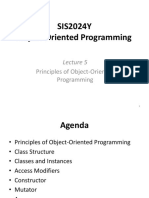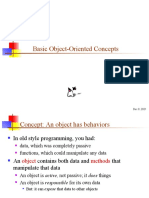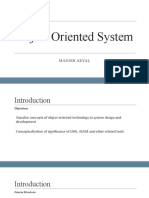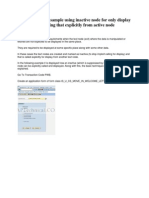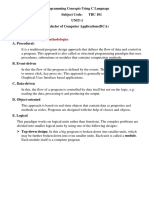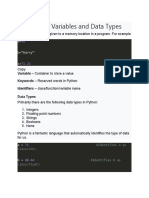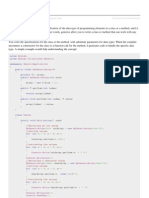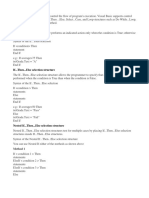0% found this document useful (0 votes)
118 views15 pagesINFO322/IAPP001 INFO322/IAPP001 Applications Applications Programming Programming
The document provides information about the IAPP001 Applications Programming subject including: - An outline of topics covered in the subject such as basic concepts of object-oriented programming like classes, objects, encapsulation, and inheritance. - Details of assignments, exams, and other assessments. Plagiarism is strictly prohibited and will result in a failing grade. - Expectations that students will spend 4 hours per week outside of class on independent study to practice concepts. Missing classes will likely lead to failure. - A review of basic object-oriented concepts like objects, classes, abstraction, encapsulation, attributes, and methods. - Descriptions of accessors and mutators - special methods to get
Uploaded by
Hùng Hùng Nguyễn NguyễnCopyright
© © All Rights Reserved
We take content rights seriously. If you suspect this is your content, claim it here.
Available Formats
Download as PDF, TXT or read online on Scribd
0% found this document useful (0 votes)
118 views15 pagesINFO322/IAPP001 INFO322/IAPP001 Applications Applications Programming Programming
The document provides information about the IAPP001 Applications Programming subject including: - An outline of topics covered in the subject such as basic concepts of object-oriented programming like classes, objects, encapsulation, and inheritance. - Details of assignments, exams, and other assessments. Plagiarism is strictly prohibited and will result in a failing grade. - Expectations that students will spend 4 hours per week outside of class on independent study to practice concepts. Missing classes will likely lead to failure. - A review of basic object-oriented concepts like objects, classes, abstraction, encapsulation, attributes, and methods. - Descriptions of accessors and mutators - special methods to get
Uploaded by
Hùng Hùng Nguyễn NguyễnCopyright
© © All Rights Reserved
We take content rights seriously. If you suspect this is your content, claim it here.
Available Formats
Download as PDF, TXT or read online on Scribd
/ 15




















